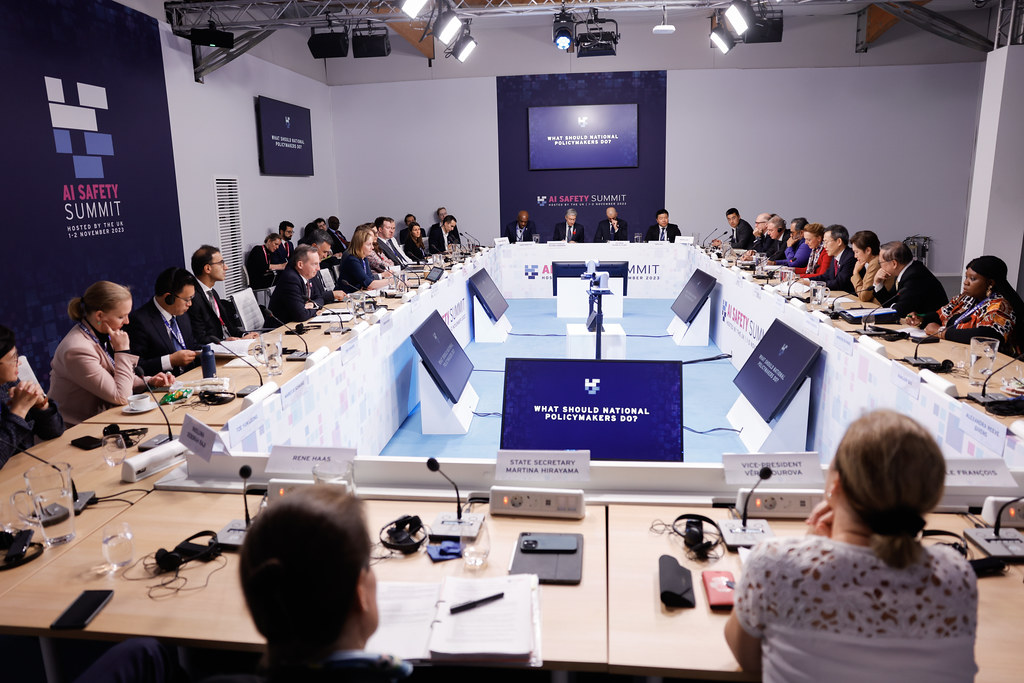Water Wars: Dollar Diplomacy
At the ASEAN Regional Forum on Aug.

Published by The Lawfare Institute
in Cooperation With

At the ASEAN Regional Forum on Aug. 4 in Singapore, Secretary of State Mike Pompeo announced $300 million in new security assistance in the Indo-Pacific region, consisting of $290.5 million in “Foreign Military Financing” and $8.5 million in “International Narcotics and Law Enforcement.” The announcement came soon after the United States unveiled $113 million in development for technology, energy and infrastructure to countries in the region.
This new security assistance will come alongside the Indo-Pacific Maritime Security Initiative, the Department of Defense’s existing effort to both build American military readiness and improve the capabilities of allies and partners in the region. The United States is currently providing military aid and capacity-building to numerous countries in the region, including Japan, the Philippines, Vietnam and Indonesia.
Also at the conference, The United States and China exchanged words over their respective military operations in the region. Pompeo told reporters that he had raised the issue of China’s militarization of the South China Sea during a meeting with the Chinese delegation.Chinese Foreign Minister Wang Yi said that the United States itself was guilty of militarization, meddling in the region and creating a security threat by its deployment of weapons.
Wang also mocked America’s stinginess in the amount of aid. “The U.S. is the world superpower, with a GDP of US$16 trillion,” he said. “So when I first heard about the US$113 million, I thought I must have misheard. It should be at least 10 times that … for a superpower, US$1.3 billion or even US$13 billion wouldn’t be too much.”
In Other News
In Space, the Final Frontier
On August 16, the China News Service reported that China is preparing to launch a satellite network capable of continuous surveillance over the entirety of the South China Sea, with the ability to track vessels and observe chosen features multiple times per day. These reports add to details of the program for satellite launches that were first revealed in December.The first satellite in the constellation, a Hainan 1 optical satellite, is scheduled to launch in the second half of 2019, and by the end of 2021 China plans to complete the project with ten satellites in orbit. This array will consist of six Hainan 1 optical satellites, two Sanya 1 multispectral remote-sensing satellites, and two Sansa 1 synthetic radar satellites.
In an interview with the South China Morning Post (SCMP), Yang Tianliang of the Chinese Academy of Sciences, which is overseeing the launches, said that “the system will [reinforce] national sovereignty, protection of fisheries, and marine search and rescue.” Once the array is completed, Yang told the SCMP, it will be able to monitor the entire area between and the 30th north and south parallels. Other sources have reported that the constellation would be capable of scanning a 3.5-million square-kilometer area and updating its image database within days. China currently has a well-developed military satellite program capable of surveilling the region, but the current military satellites are estimated to only be able to send updates every two to three months.
Officials from Sanya Institute of Remote Sensing, the branch of the Academy of Sciences responsible for the launch, have pledged to share data on passing ships, reefs, and water quality with the international community. However, Colin Koh Swee Lean of the S. Rajaratnam School of International Studies in Singapore said in an interview with Bloomberg that the surveillance will have military implications.“Couching all this under an ostensibly civilian looking program that has numerous military and maritime law enforcement applications has far-reaching strategic ramifications for the South China Sea disputes,” he said.
The Maldives
Competition between China and India in the Maldives has continued since last spring, when Maldives President Abdulla Yameen declared and then lifted a state of emergency in response to the release of political prisoners by the country’s Supreme Court. Yameen has generally favored a pro-Chinese foreign policy, while the opposition has traditionally favored India. During the state of emergency both India and China conducted military shows of force in the region.
Indicating of its turn towards China, the Maldives government recently demanded that India withdraw two military helicopters and their attendant personnel. India has provided military and economic aid to the Maldives for decades, and this aid currently includes the deployment of the two helicopters, along with other military support such as joint naval patrols. However, China has aggressively invested in the islands since the opening of its embassy in 2011, it, often muscling out Indian investment and aid projects in the process.
The Maldives’ request to remove the helicopters comes as its relationship with India has cooled considerably. Since the end of the state of emergency, India has reduced food imports to the country, while the Maldives has reduced the number of visas available to Indian workers. The maneuvering between India and China has potential long-reaching consequences beyond the islands themselves, as the widely-spread Maldives islands are located along the oil trade between the Middle East and the Pacific Ocean.
Analysis and Commentary
2018 annual report to Congress, Military and Security Developments Involving the People’s Republic of China 2018.
On Aug. 16, the Pentagon released its 2018 annual report to Congress on “Military and Security Developments Involving the People’s Republic of China.”
The report’s headline finding is that China has “likely” been training its pilots for strikes against the United States and its allies, as well as pursuing nuclear capabilities in its long-range bombers. In response, China’s Defence Military on August 17 dismissed the report as “pure guesswork” and the result of “Cold War thinking.” Defence Ministry spokesman Wu Qian also stated that China has lodged “solemn representations to the U.S. side over the report.”
Analyzing the report, Andrew Erickson discusses its key findings on the People’s Armed Forces Maritime Militia (PAFFM), the largest—and one of the only—maritime militias in the world, which often operates in concert with the People’s Liberation Army Navy and Coast Guard. The report states that China’s three maritime branches are all engaged in “low-intensity coercion” to patrol and enforce its claims to sovereignty, while also noting that the PAFMM is particularly suited for this type of coercion because it uses of civilian vessels while still often acting under the direction of the armed forces. Erickson argues that the Pentagon’s decision to shine a spotlight on the PAFFM’s role as an arm of the Chinese state is an important step in removing plausible deniability for the actions of the PAFMM, which he has said in the past that China will often deploy “under the radar” to advance its interests, including gathering intelligence, asserting its presence, and harassing the fishing vessels of other countries.
The Pentagon report also recognizes that China may be introducing floating nuclear power plants to the South China Sea. In The Diplomat, Viet Phuong in May analyzes the dangers associated with deploying these floating power plants to the region. These include not only the environmental dangers associated with this unproven technology, but also diplomatic risks for China vis-à-vis other countries in Southeast Asia. Because there are no effective international safety regime for this type of plant, he argues, other countries may be more wary of allowing them off their shores because they will be less able to check environmental compliance.
Other Analysis & Commentary
Presenting a Chinese perspective on the South China Sea conflict, Dr. Yinan Bao in argues in The Diplomat that the United States’ aerial surveillance of the South China Sea may be unlawful under the United Nations Convention on the Law of the Sea (UNCLOS). Bao notes that China and the U.S. interpret UNCLOS Article 58, regarding military surveillance, differently: China argues that the provision imposes restrictions on such surveillance, while the United States interprets it as allowing the U.S. to conduct surveillance freely. Under the Chinese interpretation, Bao argues, multiple recent overflights of the Spratly Islands by American reconnaissance planes may have violated international law.
Finally, in The Interpreter, Euan Graham questions the effectiveness of the ASEAN organization. Graham argues that ASEAN is “less than the sum of its constituent South East Asian parts,” and that Australia—set to host a special summit in March of next year—should push to make the group more effective and efficient. John Blaxland, responds, writing that the countries of ASEAN are too important to Australia for the organization to be dismissed so cavalierly, and that it is necessary and helpful despite its flaws.
Water Wars is our monthly roundup of the latest news, analysis, and opinions related to ongoing tensions in the South and East China Seas. Please email Nathan Swire with breaking news, relevant documents, or corrections.





